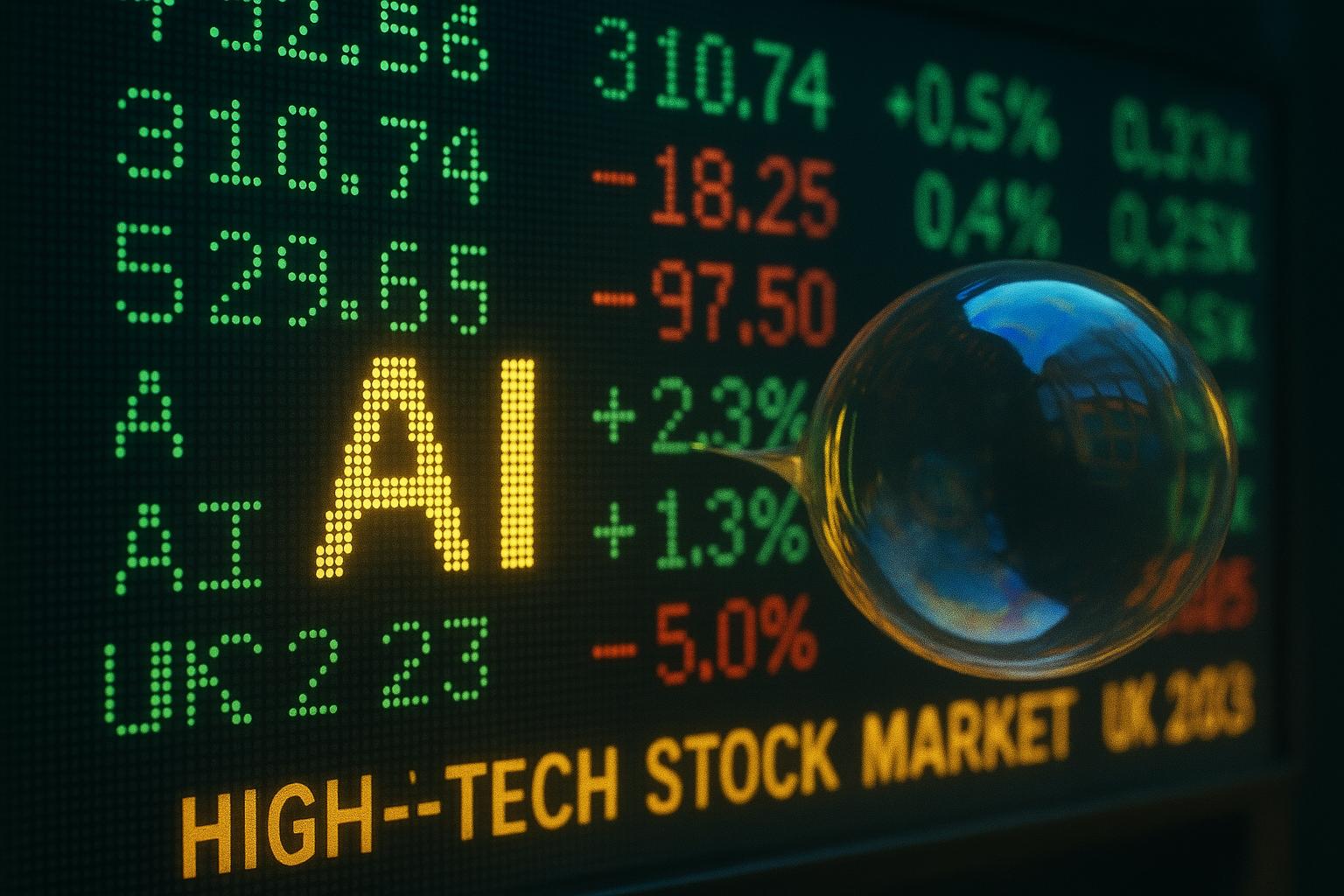Financial authorities are increasingly voicing concern over the potential formation of an AI-driven investment bubble, amid surging valuations of technology stocks spun by optimism about artificial intelligence's transformative possibilities. On Wednesday, the Bank of England (BoE) highlighted the risk that the rapid rise in AI-related tech stock prices could abruptly collapse, drawing parallels to the dotcom bubble peak of 2000. The BoE’s Financial Policy Committee pointed out that tech stocks now constitute around 40 percent of the S&P 500, with valuations appearing overstretched and market concentration within a few leading AI firms—such as Nvidia, Microsoft, and Meta—adding vulnerability to sudden shifts in investor sentiment.
Echoing this apprehension, International Monetary Fund (IMF) Managing Director Kristalina Georgieva warned of growing economic risks tied to soaring AI stock valuations that resemble the bull market fervour during the internet boom 25 years ago. Speaking ahead of the IMF’s annual meeting in Washington, Georgieva noted that while global economic growth has proven more resilient than feared—with forecasts now predicting around 3 percent growth for 2025 and 2026—the elevated valuations in AI and tech sectors could provoke sharp financial market corrections, potentially dampening world growth. The IMF’s analysis further cautions that rising public debt levels and volatile trade policies heighten uncertainty.
Market observers identify several symptoms suggestive of a bubble: rapid growth in tech company valuations, lofty stock prices that may outpace actual earnings, and an overarching optimism about AI’s future despite significant uncertainties around its real economic impact. Economists at Oxford Economics stress the broad disparity in expectations—from highly optimistic forecasts envisioning AI-driven productivity gains comparable to post-World War II Europe's reconstruction, to more conservative estimates such as MIT economist Daron Acemoglu’s prediction of a modest 0.7 percent productivity lift over a decade. “Nobody really knows where it’s going to land,” said Adam Slater, lead economist at Oxford Economics.
While leading AI companies like OpenAI have attracted huge investments and partnerships, including deals with chipmakers Nvidia and AMD, as well as a $300 billion infrastructure project with Oracle, profits remain elusive. OpenAI, valued at around $500 billion, operates at a loss but commands outsized investor attention. The BoE report notes that stretched valuations for AI-focused tech firms present significant downside risks, compounded by potential constraints like shortages of electricity, data, or semiconductor chips, as well as the possibility that technological shifts could reduce reliance on the current AI infrastructure being built worldwide.
Despite these warnings, prominent tech figures urge caution against overinterpreting the risks as purely financial. Amazon founder Jeff Bezos described the current AI surge as an “industrial bubble” likely to yield societal benefits even if some investments prove misguided. Speaking at a technology conference in Italy, Bezos likened the situation to the biotech bubble of the 1990s, which, despite excesses, fostered new life-saving drugs. He highlighted the difficulty investors face in distinguishing worthwhile ventures amidst the flood of funding flowing into AI startups.
OpenAI CEO Sam Altman has acknowledged the likelihood of “dumb capital allocations” and inevitable fluctuations in investment levels but remains confident in AI’s long-term economic promise. He envisions the technology ushering in unprecedented growth, scientific breakthroughs, and enhanced creativity. Nvidia CEO Jensen Huang further described a transition underway from early AI chatbots operating at loss to more sophisticated AI agents capable of higher-level reasoning and carrying out complex tasks such as research and coding autonomously.
Nevertheless, some analysts believe the initial hype around AI is now fading as businesses critically evaluate the tangible returns from AI tools, especially the much-anticipated AI agents designed to perform tasks beyond simple conversation. Forrester analyst Sudha Maheshwari suggested that 2026 may mark a turning point when AI’s gleam dims, and the technology settles into a more workaday reality requiring sustained effort to realise its full potential.
Across global regulatory circles, responses vary. While the BoE and IMF signal caution and call for vigilance against risks linked to inflated market expectations and possible tech disruptions, San Francisco Federal Reserve President Mary Daly voiced a more measured view. Daly told Axios she does not see the AI stock surge as constituting an immediate threat to broader financial stability, noting that AI-induced innovation could enhance productivity and democratise expertise but also impact employment. Her stance suggests the Federal Reserve may refrain from intervening unless clear systemic risks emerge.
Closer to the UK's financial ecosystem, the Bank of England has also initiated a review targeting the risks artificial intelligence might pose to financial stability. Governor Andrew Bailey emphasised the potential economic benefits from AI while underscoring the importance of cautious adoption, given concerns about herding behaviour, cyber vulnerabilities, and market volatility.
Beyond finance, the IMF chief has highlighted the profound impact AI is already having on labour markets globally, describing it as a "tsunami" expected to affect a majority of jobs in advanced economies within the next couple of years. This mounting labour disruption compounds economic uncertainty, reinforcing calls for structural reforms and proactive policy measures to harness AI's benefits while mitigating its risks to workers and societies.
In sum, while the exuberance around AI-driven technology remains palpable and some industry leaders maintain bullish outlooks, global financial institutions are sounding a prudent note of caution. The current landscape evokes memories of past market bubbles, underpinning the need for vigilant risk management amid ongoing technological change and evolving economic prospects.
📌 Reference Map:
- Paragraph 1 – [1], [3], [2]
- Paragraph 2 – [1], [4], [2]
- Paragraph 3 – [1], [2]
- Paragraph 4 – [1], [2]
- Paragraph 5 – [1], [2]
- Paragraph 6 – [1]
- Paragraph 7 – [1]
- Paragraph 8 – [1]
- Paragraph 9 – [2], [5], [6]
- Paragraph 10 – [1], [4], [7]
Source: Noah Wire Services
